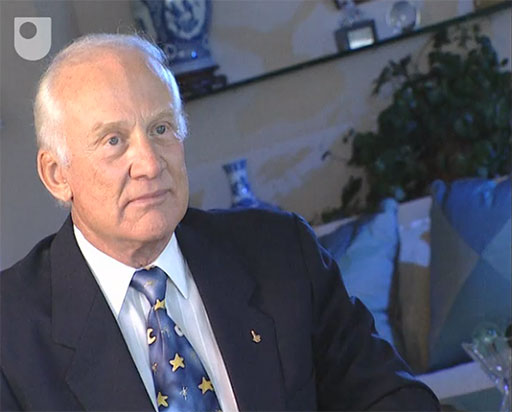3 What’s the Buzz?
Thoughts on moons, and that all-important end-of-course test.
Just before you review all that you’ve learned in the end-of-course test, here’s a short video of someone special sharing his thoughts on the significance of the Moon and other moons. The interview was recorded for The Open University in 1999, but the extracts used here have never before been released.
When you’ve watched this, move on to the test.

